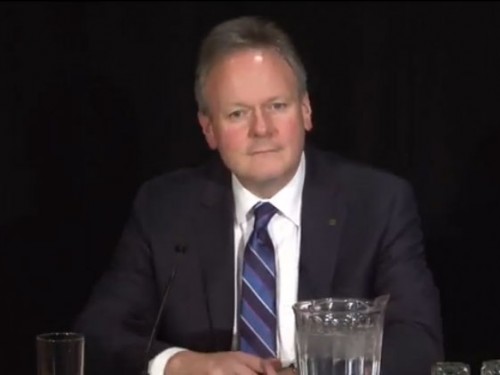Monetary Policy as Risk Management
Introduction
Thank you for those kind words. It is a real pleasure to be here in Montréal.
I am going to talk today about managing risks.
This is something that we all do in all aspects of our lives - whether we are running a business, pursuing a career, or looking after a family. As we make plans in pursuit of a goal, we take into account what could go wrong - and what can be done to mitigate that.
Of course, we can never fully eliminate risks - we can only manage them prudently.
As an economist and a central banker, I think a lot about risk. I’m not the only one. In response to what we have experienced these last few years, central bankers around the world are adapting the way they do business. At the Bank of Canada, in recognition of the increased uncertainty that surrounds us, we are adjusting our lens on risks, how we evaluate them and how they enter into decisions about monetary policy. That is my topic this afternoon.
Monetary Policy Formulation
Not everything has changed, far from it. The best way for the Bank of Canada to deliver on its mandate is, as always, to keep inflation low, stable and predictable. In 1991, the Bank adopted an inflation target and, since 1995, our target has been 2 per cent inflation. The target is sacrosanct.
And, in more than two decades of inflation targeting, we have generally succeeded: on average, inflation has been very close to the target.
This has not happened by itself. Like navigating a ship, we have had to adjust to the currents around us and to bouts of foul weather. Some of the challenges are minor, calling for temporary adjustments in course or speed. Others may involve a major detour. In worst-case scenarios, there are risks of running aground, or even capsizing. In all cases, we have to anticipate as well as react.
The Bank’s Governing Council sets the policy interest rate with the goal of achieving our 2 per cent inflation target. Central to this decision is our view of the most likely path for the Canadian and global economies. Conditional on these forecasts, there is a unique path for interest rates that should bring us back to target, just like the captain who plots the intended course for his ship. At that point in the process, monetary policy can seem like precision engineering.
But just like at sea, in monetary policy, the view is not always perfectly clear. Given what we’ve been through and continue to experience, our forecasts are not pinpoint numbers; rather, they represent ranges of likely outcomes. Likewise, our economic models are a better source of questions than answers.
To make sure that such uncertainty is not just acknowledged but is actually embedded in our policy decisions, we have incorporated explicit “rule-of-thumb” ranges around the most critical variables for our projection.
In doing so, we are reminding ourselves - and those who watch us - that, especially in the wake of the crisis, economic projections are subject to considerable uncertainty.
Indeed, while Canada came through the global financial crisis and ensuing Great Recession better than our G-7 peers, we are taking longer than expected - or desired - to get home. Our economy still has not returned to full capacity, and inflation has been running persistently below our 2 per cent target.
Because of the unprecedented nature of the crisis and subsequent recession, the global recovery has been anything but smooth or normal. As we navigate these uncharted waters, we are especially vigilant in our lookout for risks that could push us off course.
Assessing Risk Through Two Lenses
This lookout is an important element of our policy deliberations. We assess how risks could interact with each other. We gauge their potential impact. And we use judgment to determine the balance among them, both today and in prospect. In fact, monetary policy formulation these days is more a process of risk management than one of precision engineering.
It is important to stress that risks are not part of our baseline forecast - they are not what the Bank expects to see, but rather, they are the possible deviations from what we anticipate. We work to avoid or, at least, mitigate them.
The Bank of Canada looks at risks through two lenses: (i) the possible impact on the outlook for real economic activity and inflation, and (ii) the possible impact on the stability of the financial system.
These two sets of risks are related but, for the moment, let me discuss them separately.
Targeting inflation is necessarily a forward-looking activity. It is informed by the work of economic forecasters who crunch the data and use models to assess the most likely future path of inflation. As our inflation target is symmetric, we care about both the upside and downside risks to inflation. Of course, when we are already below target, as we are today, we care more about downside risks than upside ones.
The Bank’s projection for inflation and its assessment of the risks around that projection are published quarterly in our Monetary Policy Report (MPR).
Risks to financial stability are viewed through a separate lens. The risks we consider are those that have the potential to disrupt or harm the financial system - namely, the downside, or bad, risks. Our primary objective is to determine the likelihood that they materialize and, if they were to occur, their impact on financial institutions and the functioning of markets.
The Bank examines such risks in depth twice a year in our Financial System Review (FSR), the most recent of which was published just two days ago.
While we examine the two sets of risks from different perspectives, we take into consideration the interplay between them. We learned, through the painful experience of the recent crisis, that pursuing economic stability without due regard for financial stability risks achieving neither. Both are necessary, but neither is sufficient. Both are central complements to each other, not substitutes.
It follows naturally that, as policy-makers, we consider the risks to economic stability and financial stability in an integrated fashion. Like the two lenses of binoculars, this adds depth to our understanding of the forces at play.
Avoiding Disaster
Let me use a couple of examples. People ask me every day about the potential, in our present situation, for runaway inflation or runaway deflation. Indeed, sometimes the same person is worried about both! These risks sit at the extremes of the distribution of what’s possible. I’ll address each of them in turn.
Runaway inflation
Let’s talk first about the risk of runaway inflation. This happened 40 years ago here in Canada and in most advanced economies. Prices spiralled up, economic growth was weak and unemployment was rising. Inflation got away from us. People’s expectations of future inflation became unanchored, pushing up actual inflation. Interest rates were also high, but savings were eroded by the high inflation.
When the Bank of Canada finally made a determined effort to bring inflation back under control, our economy went through a major recession.
Some wonder if today’s easy monetary policy in Canada - alongside quantitative easing in other countries - could lead to a similar outcome. Their fear is that all that money creation is eventually going to result in an explosion in inflation.
They needn’t worry. The situation now is different from the early 1970s. Monetary stimulus today is offsetting the serious and still ongoing downside shocks resulting from the crisis.
Of course, it is worth asking what will happen when those negative forces abate. Could all that additional liquidity fuel inflation then? My answer is: central banks will need to drain that extra liquidity from the system at some point, as the economy heals. While I don’t want to underestimate the challenge of getting that exit exactly right, I am confident that we have the ability to keep inflation from taking off.
In short, we will remain vigilant. We are prepared to remove monetary stimulus when it’s no longer needed to offset the forces that currently are pulling inflation below target. But, right now, it looks to us like it will take around two years to get inflation back up to 2 per cent.
Deflation
Let’s switch gears and look at the risk of outright deflation. Like out-of-control inflation, deflation can become a spiral, but a downward one. Expectations become unanchored on the downside, and people put off their purchases because they expect things to be less expensive later. Demand declines with prices, while the weight of debt on the economy grows.
In the Great Depression, consumer prices in Canada fell 25 per cent, and national output dropped by almost a third. The human cost was staggering, with unemployment reaching 20 per cent. A milder form of deflationary trap has nagged Japan for the past 20 years.
What I am describing is an economy-wide process of deflation, which is quite different from individual prices falling because of improved competitiveness in an economy that is still growing strongly.
Today, the concern is that even though policy-makers were successful in avoiding global deflation in the wake of the 2008 crisis, there is still a risk that inflation could creep down into deflationary territory as the aftershocks of this crisis persist. It is, at least in part, to counter that risk that central banks in a number of countries have kept interest rates very low and used unconventional monetary policies, such as quantitative easing, to provide additional stimulus to their economies.
History has taught us that deflation usually comes in the wake of a financial crisis. This was true of the Great Depression, and of the Japanese deflation of the 1990s. Perhaps the most important lesson of the crisis, then, is that a stable financial system is necessary to keep inflation low, stable and predictable - and limit the risk of falling into a deflationary trap.
The Policy Response - Where Does Financial Stability Come In?
This is why the G-20 Leaders launched a reform agenda in 2009 to make the global financial system more robust. In short, we never want to go through this again. Since the crisis, central banks have also been focusing greater attention on financial stability issues. In fact, this is a return to our roots. Many central banks were created primarily to preserve financial stability. This includes the Bank of Canada, which came into being during the Great Depression.
The first line of defence against a buildup of financial imbalances is effective regulation and supervision. In Canada, it is ultimately the Minister of Finance who is responsible for the stewardship of the financial system. Regulation is carried out by the Office of the Superintendent of Financial Institutions, deposit insurance by Canada Deposit Insurance Corporation, and consumer awareness by the Financial Consumer Agency of Canada. The Bank of Canada’s assessment of financial stability risks is an important contribution to this team effort.
It is also critical, as I mentioned earlier, to the Bank’s policy-making. Today, we are focused in particular on the risks associated with household imbalances.
To explain, let me back up a bit.
At the height of the crisis, although our financial system remained sound, our exports collapsed, causing a recession. To support economic growth, we have relied mainly on household spending, supported by exceptionally stimulative monetary policy.
But there are trade-offs, lots of them. Today, the most obvious is that prolonged low interest rates can result in the development of imbalances in the household sector. In Canada, we have seen rising levels of household indebtedness, stretched house-price valuations and overinvestment in housing. To address these imbalances, the Finance Minister tightened mortgage insurance rules four times, among other measures, and the Superintendent of Financial Institutions introduced stronger mortgage underwriting standards for Canada’s banking institutions.
In the wake of these measures, a constructive evolution of household imbalances began around the middle of last year. Growth in household borrowing has moderated, and residential investment is on a more sustainable track. Those indicators have picked up again, we think mainly because people pulled forward their plans when mortgage rates started to move up during the summer. We expect these imbalances to stabilize and then gradually unwind in coming years.
In our base-case scenario, the Bank expects a soft landing in housing and a pickup in exports and investment. This rotation will relieve the tension between low demand and household imbalances. Nonetheless, the risks around this base case need to be managed.
There is a risk that household imbalances could keep building and set the stage for a sharp correction down the road. Such a correction would be a risk to both the Canadian economy and our financial system.
Our current monetary policy weighs this risk against the risk of inflation falling even further below target. This zone of balance is relevant today and in prospect, as we expect both risks to diminish over the next two years or so. This is what I mean when I describe monetary policy as an exercise in risk management.
Credibility Counts
Our flexible inflation-targeting framework gives us the room to manoeuvre in the face of unusual shocks. This only works if expectations are well anchored: the public has to be confident that we will get to the 2 per cent target. Our commitment to the inflation target must remain credible.
Credibility is coin. It is earned only through years of sound policy. Without it, low and stable inflation could only be achieved at considerable short-run cost to the economy - as was our experience in the early 1980s, when we tackled runaway inflation.
Credibility must be employed wisely. We think of it as an investment. By using credibility to exercise the framework’s flexibility, we are working to maintain stable financial conditions that will support the expansion of capacity and return the economy to its full potential. As the process unfolds, we anticipate there will be a future payoff of enhanced credibility.
As we decide policy, we cannot take credibility for granted; we must keep earning it by ensuring, first and foremost, that monetary policy remains focused on keeping inflation on target.
Conclusion
Let me conclude. I’ve described how we manage a menu of risks in our policy decisions: We look at risks through two lenses. We are concerned with the big risks of runaway inflation and deflation and are acting to keep them remote. We have learned, the hard way, that financial stability is a necessary condition for low and stable inflation, and we are working here in Canada and around the world to improve the resilience of the financial system. Our current monetary policy balances the risk that inflation could drift even further below target against the risks of exacerbating financial system imbalances.
As central bankers, here in Canada and globally, we are in new territory. It brings to mind the sailors of another era who were driven far off course by a nasty storm. When things calmed, they found themselves in the southern hemisphere. Suddenly the navigational chart that they relied on - the night sky - was completely different.
We have every reason to believe that, after the experience of the crisis is behind us, central banking will be defined very differently than it was just five years ago. We know now that economic and financial stability are intrinsically linked, and we are figuring out as we go how to better integrate the two in our analysis and research, and in our policy.
On a technical level, we are actively building new models and adding new detail to our existing ones. We are spending more time talking to real people making real economic decisions, to understand better the forces we are facing. And, we are communicating differently, not just more, but with more transparency, with due regard to the uncertainty around us.
I am confident that we’ve got it roughly right, given what we know and especially what we don’t. Just like those sailors on the open seas, we will adapt and thrive - and find our way home.


